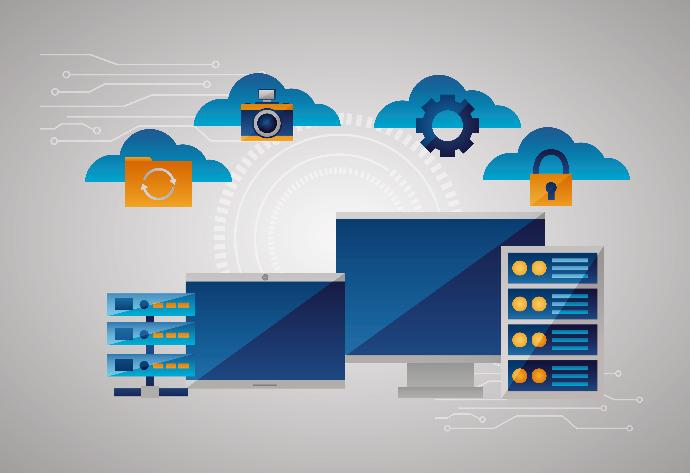Cloud Migration for IoT

In today's technology-driven world, businesses are increasingly turning to cloud migration to enhance their operations. This article explores the concept of cloud migration, its benefits, and specifically how it can revolutionize your IoT platform.
What is Cloud Migration?
Cloud migration refers to the process of transferring applications, data, and infrastructure from on-premise systems to cloud-based environments. It involves leveraging the resources and services provided by cloud providers to enhance scalability, flexibility, and accessibility. By making this transition, businesses can unlock numerous advantages that propel their digital transformation.
Benefits of Cloud Migration
Cloud migration offers a host of benefits that can transform the way businesses operate. Let's explore some of the key advantages:
Cost Savings: Cloud migration eliminates the need for significant upfront hardware investments, as cloud providers offer a pay-as-you-go model. This allows businesses to reduce infrastructure costs and pay only for the resources they consume.
Scalability and Flexibility: Cloud platforms provide unparalleled scalability, allowing businesses to easily scale their resources up or down based on demand. This flexibility empowers IoT platforms to handle fluctuating workloads and accommodate growth seamlessly.
Enhanced Security: Cloud providers implement robust security measures to protect data, often surpassing what most businesses can achieve on-premise. Data encryption, regular backups, and stringent access controls ensure a high level of security for your IoT platform.
Global Accessibility: Cloud migration enables remote access to your IoT platform from anywhere, anytime. This accessibility fosters collaboration among team members, regardless of their physical location, and empowers real-time monitoring and control of IoT devices.
Improved Reliability and Disaster Recovery: Cloud providers offer redundant infrastructure and data replication across multiple locations, ensuring high availability and reliable performance. Additionally, they provide disaster recovery options to safeguard your IoT platform against unforeseen events.
Benefits of Cloud Migration for Your IoT Platform
When applied specifically to IoT platforms, cloud migration unleashes additional advantages that drive innovation and efficiency:
Scalable Device Management: Cloud platforms facilitate the seamless integration and management of a vast number of IoT devices. They offer tools and services that simplify device provisioning, configuration, and monitoring, enabling effortless scalability as your IoT fleet expands.
Advanced Analytics and Machine Learning: Cloud migration empowers your IoT platform to harness the power of advanced analytics and machine learning. By processing and analyzing large volumes of IoT data in the cloud, you can derive valuable insights, optimize operations, and make data-driven decisions.
Real-time Data Processing: Cloud-based IoT platforms maximize the computing power of the cloud to process and analyze data in real-time. This enables instant response to critical events, faster decision-making, and the ability to trigger automated actions based on predefined rules.
Integration with Third-party Services: Cloud migration opens doors to integrating your IoT platform with a wide array of third-party services and APIs. This allows you to utilize existing tools, expand functionality, and tap into complementary services to enhance your IoT solution.
Cloud Migration Process
To embark on a successful cloud migration journey, businesses typically follow these key steps:
Assessment and Planning: Evaluate your existing infrastructure, applications, and data to determine the feasibility and potential benefits of cloud migration. Create a migration plan, including resource allocation, timeline, and potential risks.
Data Migration: Transfer your data from on-premise systems to the cloud, ensuring data integrity and security throughout the process. This may involve using tools, services, or manual data transfer methods, depending on your specific requirements and the nature of your data.
Application Migration: Replicate or refactor your applications to make them compatible with the cloud environment. This may involve redesigning certain components, optimizing performance, and ensuring seamless integration with cloud services.
Testing and Validation: Thoroughly test the migrated applications and data to ensure they function as expected in the cloud environment. Validate the performance, security, and reliability of your IoT platform to guarantee a smooth transition.
Deployment and Optimization: Deploy your cloud-based IoT platform and monitor its performance closely. Fine-tune configurations, optimize resource allocation, and leverage cloud-native features to maximize the benefits of your migrated IoT solution.
Conclusion
Cloud migration offers a multitude of benefits for businesses, and when applied to IoT platforms, it unlocks new realms of innovation and efficiency. From cost savings and scalability to enhanced security and global accessibility, cloud migration enables businesses to harness the full potential of their IoT initiatives.
Every cloud migration journey is unique, so it's essential to assess your specific needs and consult with experts to ensure a successful transition. By embracing cloud migration, you can transform your IoT platform and stay ahead in the rapidly evolving technological landscape.
Find out how migrating to the cloud can improve your software development process